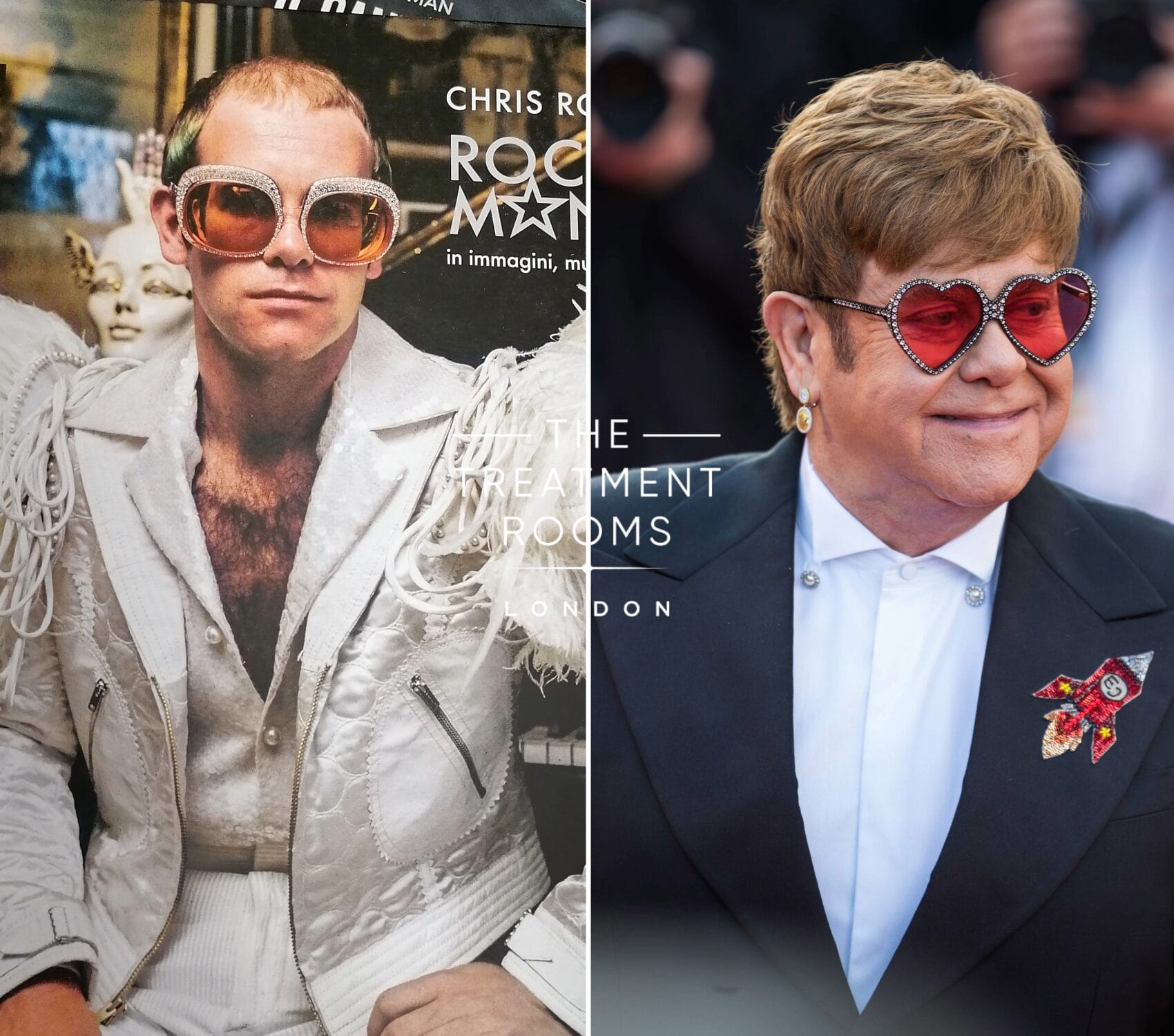Quick Summary: Buzz Cut After Hair Transplant
What is a Buzz Cut?: After a hair transplant, a buzz cut is a short, even haircut that can help create a uniform appearance as new hair grows in. It can help seamlessly blend your transplanted hair with existing hair during the recovery phase.
Styling Post-Transplant: Initially, avoid any hairstyles that put pressure on the new grafts. Generally, it’s safe to buzz cut hair after 1 month, depending on individual healing. A buzz cut can help even out hair length and enhance the overall look.
Considerations for Haircuts: Wait until the donor and recipient sites have fully healed before getting a buzz cut, to avoid injury to the scalp. At The Treatment Rooms, our surgeons offer personalised advice on the timing and styles that best suit your recovery. If there are any doubts, please consult your surgeon for guidance. Proper timing and care are crucial to protecting your investment, and achieving the best aesthetic results.
Whether you’ve already had a hair transplant and are considering your styling options, or just exploring the concept, this blog will help to address any questions you may have.
The Hair Transplant Recovery Period
Here at The Treatment Rooms, we aim to educate our patients right from the initial consultation on what to expect when you decide to do a hair transplant. Following each step carefully is essential for a successful transplant and achieving good results.
Here’s a quick overview of our hair transplant recovery timeline:
Days 1 – 5:
- Remove Bandages: Remove bandages after 24 hours, being careful not to touch the recipient area or grafts.
- Protect Scalp: Wear a cap to protect your scalp if outdoors and manage side effects, like swelling, with the provided medication and sleep instructions.
- Healing: The donor area typically heals within 5-7 days, due to the minimally invasive Follicular Unit Extraction (FUE) incisions. Unlike Follicular Unit Transplant (FUT), FUE involves extracting individual hair follicles rather than a strip of skin, resulting in quicker healing. Generally your donor and recipient areas have healed in 1 week following your hair transplant.
You can read more about FUE and FUT here.
Days 4 – 5:
- Gentle Washing: You can start to gently wash your scalp following detailed aftercare instructions.
- Avoid Scratching: Although the grafts will be more secure, be cautious of scabs and avoid itching or scratching them as this can increase the risk of infection (folliculitis)

First Two Weeks:
- Follow Instructions: It will be best to adhere strictly to post-operative instructions and use the medication we provide you with in your aftercare package. The initial two weeks are crucial as your transplant is still fresh, and both the donor and recipient areas need special care.
- Avoid Trauma: Protect your head from any impact and trauma, as the grafts are not yet secure.
- Reduce Exercise: Limit exercise to prevent sweat and dirt buildup which can prolong redness.
After Two Weeks:
- Shedding Period (aka Shock Loss): As part of the healing process, the hair follicle ejects its shaft due to the “shock” of being moved. The root itself is still underneath the skin, however. This is completely normal and temporary.
- New Hair Growth: New hair growth begins at this , providing a fuller appearance.
- Final Results: The final results are visible, showcasing a fuller head of hair. A full growht timeline can be seen on our website: hair transplant timeline
- Ongoing Care: It is important to continue to follow your surgeon’s guidelines, and maintain proper hair care to sustain these results.
When Can You Look Into Getting a Haircut After A Hair Transplant?
Immediately after a hair transplant, it’s important to avoid any hairstyles that put pressure on the scalp or hair follicles. The scalp needs time to heal, and the newly transplanted hair follicles are very delicate during this period.
When you can start styling your hair after a transplant really depends on your personal healing process, as it varies between individuals. Generally, once the hair follicles are firmly secure and the scalp has healed, you can safely get a haircut. This usually happens after 1 month, but again, this timeline can be person-specific. The earliest you could scissor cut your hair would be after passing the 14-day recovery period, after which your donor site is well-healed. A full article on how long it takes grafts to become secure after your hair transplant can be read here.
Cutting your hair too short, without allowing enough time, can expose the scalp to injury and infection. Studies have shown that a well-taken-care of scalp after transplant with less tension and trauma provides much better results.2,3
Hair Cut After An Unshaven Hair Transplant
Some patients who opt for an unshaven hair transplant may decide to neaten up their hair cut before going back to work. They can do this after 14 days have passed following their hair transplant.
Why Go For A Buzz Cut After A Hair Transplant?
A buzz cut can make your hair look more uniform as it grows in, helping the recipient site hairs blend seamlessly with the rest of your hair. At The Treatment Rooms, our surgeons will discuss the best area and shave type for your hair procedure, both at the donor (typically the lower back of your head) and the recipient sites (which varies from person to person). We do this well in advance of your surgery.
Our professional technicians will shave these areas to make it easier to extract hair follicles from the donor area and implant them back into the recipient area. The figure below may help you understand the terms donor and recipient sites better.

After the procedure and during the recovery period, your hair might look uneven due to the initial shave, healing, shedding and regrowth. You can read about the first 7 days of recovery in these series of vlogs by our patients, if you’re interested. You may find it easier to even out the hair growth with a buzz cut / shave after 1 month has passed following your surgery.
Conclusion
So, can you get a buzz cut after a hair transplant? Generally you are safe to have a buzz cut after 1 month has passed following your hair transplant. However, if you’re unsure, it’s always a good idea to first contact your surgeon. They will be able to examine your recovery, and give you the best advice on when to get a haircut.
At The Treatment Rooms, we take pride in providing tailored treatment and advice for our patients. We understand and appreciate the careful thought and consideration you put into deciding on your hair transplant. We’re here to guide you through your journey to regaining your hair and confidence, and are always available to help you with any questions or concerns along the way.
If you would like to further understand hair transplant surgery and the recovery process, you can read our comprehensive guides here:
- How Does A Hair Transplant Work?
- Hair Transplant Timeline: What To Expect
- A Guide To Hair Transplants and Donor Area Recovery
- An Extensive Guide To Hair Transplant Aftercare & Recovery
- Frequently Asked Questions about Hair Transplants
References
- NHS. Hair Transplant. NHS Choices 2023. https://www.nhs.uk/conditions/cosmetic-procedures/cosmetic-surgery/hair-transplant/ (accessed May 21, 2024).
- Seery G. E. (2002). Hair transplantation: management of donor area. Dermatologic surgery: official publication for American Society for Dermatologic Surgery [et al.], 28(2), 136–142. https://doi.org/10.1046/j.1524-4725.2002.01150.x
- Bernstein, R. M., & Rassman, W. R. (2006). Graft anchoring in hair transplantation. Dermatologic surgery: official publication for American Society for Dermatologic Surgery [et al.], 32(2), 198–204. https://doi.org/10.1111/j.1524-4725.2006.32033.x
Share:
Authored by
Reviewed by
Book a Consultation
Related Blogs
Ariana Grande Hair Loss: Prevention, Styling Secrets, and Hypothetical Transplant Solutions
April 10, 2025
Ariana Grande, the global pop sensation renowned for her signature high ponytail and bold hairstyles, has openly…
Daniel Craig Hair Transplant: Before, After and His Hairline
April 10, 2025
Daniel Craig, the world-famous English actor who gained international fame as the fast-paced, debonair James Bond, has…
Rob Brydon Hair Transplant: Before, After, and His New Hairline
April 8, 2025
Rob Brydon, the beloved Welsh comedian and Gavin & Stacey star, has traded his receding hairline for…
Gordon Ramsay Hair Transplant: Before, After, and His New Hairline
April 3, 2025
Gordon Ramsay, the fiery Michelin-starred chef, restaurateur, and TV personality, has swapped his receding temples for a…
Has Perez Hilton had a hair transplant? All You Need to Know
April 2, 2025
Perez Hilton is a familiar face in the media. He is known for his work as a…
Ronnie Vint – Love Island Hair Transplant: Before, After, And His Hairline
March 31, 2025
Ronnie Vint, a former footballer and current TV personality, appeared on the 2024 season of “Love Island”…
Prince Harry Hair Loss: Speculations, Treatments, and Possible Transplant Options
March 28, 2025
Prince Harry, the Duke of Sussex and beloved royal-turned-global humanitarian, has sparked global curiosity over his ever-evolving…
Elton John and His Hair Transplant Journey
March 27, 2025
Sir Elton John has had one of the greatest careers in music. Since his rise to fame…
Elon Musk Hair Transplant: Before, After and His New Hairline
March 26, 2025
Elon Musk, the billionaire behind Tesla and SpaceX, is a well known figure for his innovations and…











